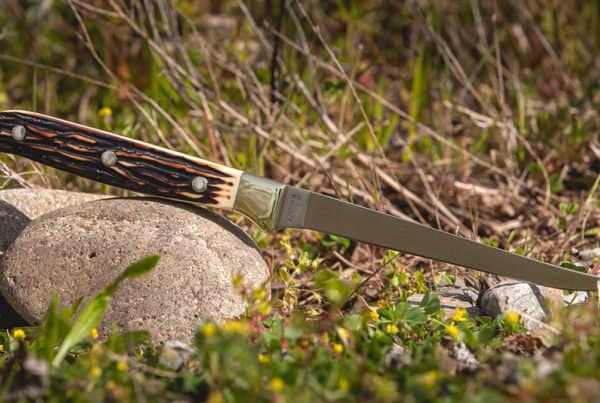For many, the mere mention of Old Timer knives elicits positive feelings of warm summer evenings wandering through the woods or whittling small trinkets on the back porch. Even after 55 years, Old Timer knives remain popular, whether it’s because the name itself means so much to so many people or the knives still carry a lure in their appearance and construction (probably a bit of both).
Despite the enduring legacy of a brand commonly associated with quality and dependability, Old Timer has been on a long, winding road with many obstacles along the way.
The History of Old Timers
Even though the Old Timer brand wasn’t created until 1958, its roots date back to 1904 when George Schrade formed the Schrade Cutlery Company in Walden. Schrade found great success with his knives, but the company was eventually sold in 1946 to become part of the Imperial Knife Associated Companies group. The old Schrade company was renamed Schrade-Walden Cutlery Co, Inc.
That group (which would later become the more familiar Imperial Schrade Corp) had already consisted of two established knife companies: Ulster Knife Company and Imperial Knife Company.
Schrade Old Timer knives
Schrade Old Timer knives have been standards on the market for generations and they are legendary. Old Timer Pocket Knives include stockman knives, pen knives, folding hunter knives and other pocketknife models as well as various fixed blade knives like hunting knives and camp knives.
One of the stories reported in the Old Timer Almanac says that Uncle Henry Baer, president of the Schrade Cutlery Corp, or his brother Albert Baer, chairman at the Imperial Knife Associated Companies, desired a good old-fashioned knife and the name Old Timer was a natural fit for a new line of knives that harkened back to the days of old.
Another similar story is found in the paperwork that accompanied a 25th anniversary model of the 34OT. This one says the following: ‘We decided to offer a knife like Grand-dad had, so the name ‘Old Timer’ was developed. We reached back into the files to find a pattern with the greatest utility. One that was comfortable to hold and that would be practical for whittling and carving, and husky enough to stand the rough treatment by the home handyman.’
The Old Timer line as we know it today was first produced by Schrade-Walden in 1959 with the 2OT, a Barlow knife with the name Old Timer stamped on the button bolster. Then, in 1960, the 8OT was added to the line.






